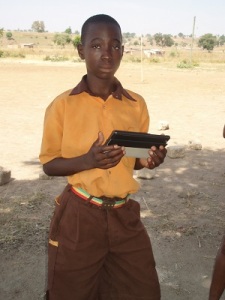This is the 22. post from Ghana! And the last one! All the schools which registered in the Mondo’s food project have done their food project now (from September to November).
This post is special not only because it’s the last one from Ghana but this is the first and only which introduces you about the Ghanaian traditional drink.

Kongo Junior High School decided to change their food project plan and prepare the drink called “zoomkoom” instead of making “tubani” (some schools have already prepared it!).

“Zoomkoom” is a flour water. “Zoom” means flour in nabt and “koom” means water. This drink is offered to (unexpected) guests, it is easy to make and delicious to taste! So “zoomkoom” is a welcome-to-my-house drink.

There are two different variants of “zoomkoom”: the traditional one and more modernized. Kongo JHS prepared them both.

Recipe for traditional “zoomkoom”
Ingredients:
– Guinea corn flour mixed with pepper;
– shea butter;
– water.
How to prepare:
1. Mix the flour with shea butter and stir. Use kalabash.
2. Add some water and stir.

In modernized “zoomkoom” instead of Guinea corn millet flour is used and sugar is also sugar is added, not shea butter – the rest is the same.

“Zoomkoom” has an interesting taste, it is hot (spicy) and sweet at the same time! It is really nutritious and advised for sportsmen.
Watch our video and try to prepare “zoomkoom” yourself!
Read all the posts by Kongo Junior High School
Read all the post by students from Ghana.































